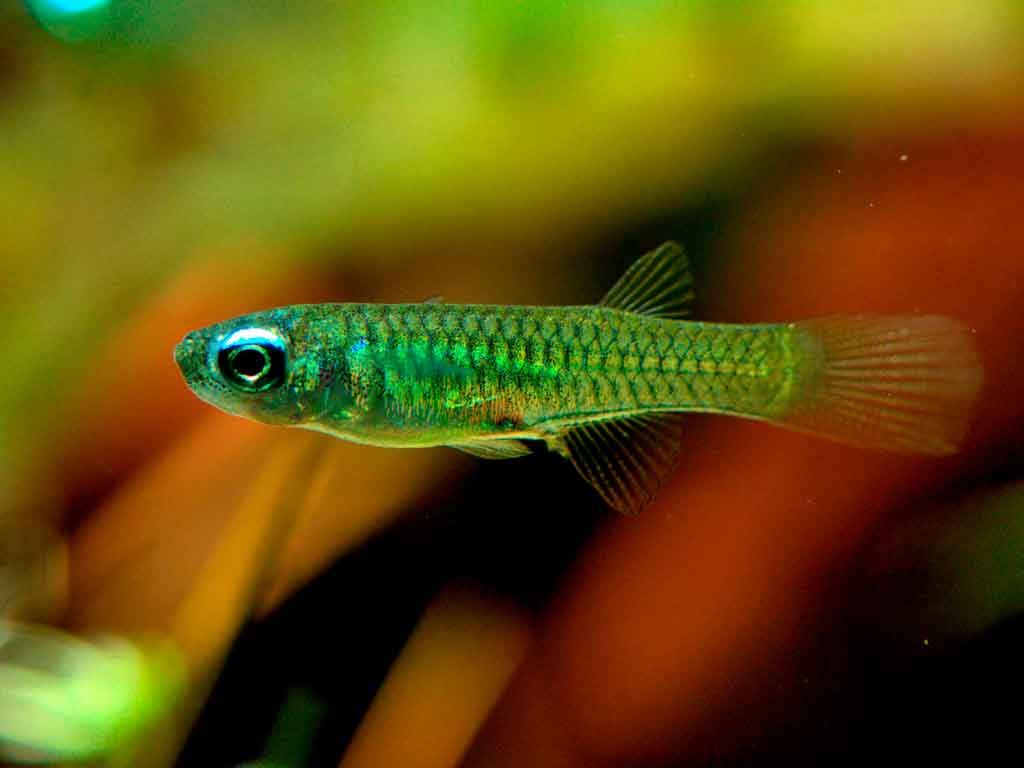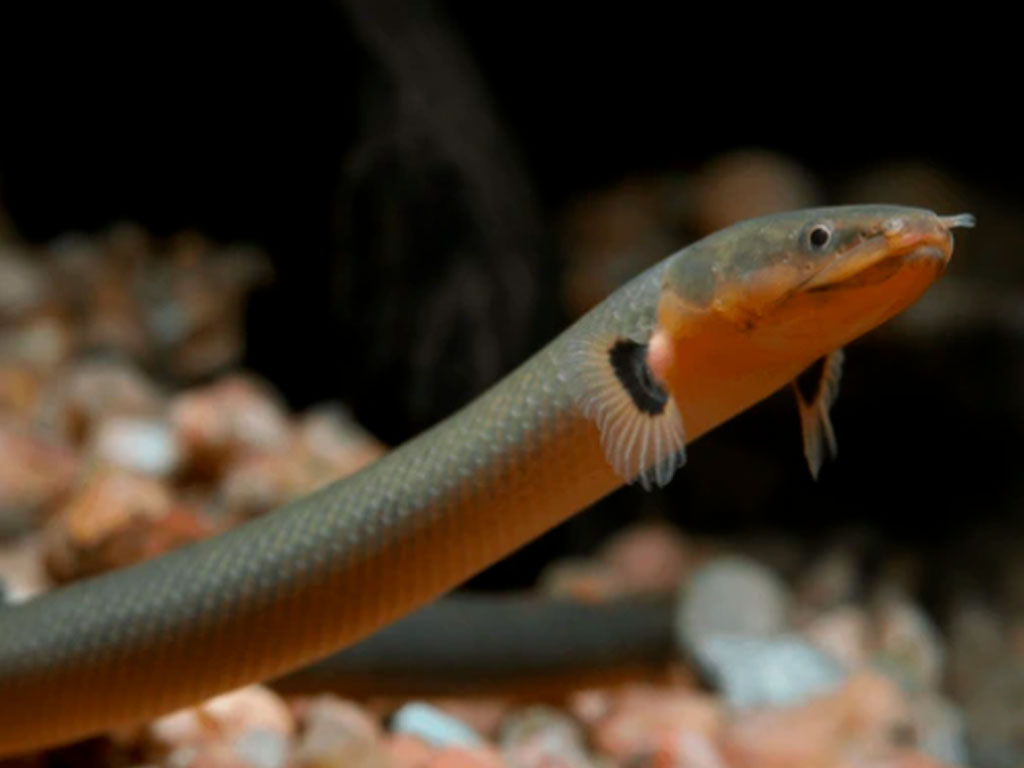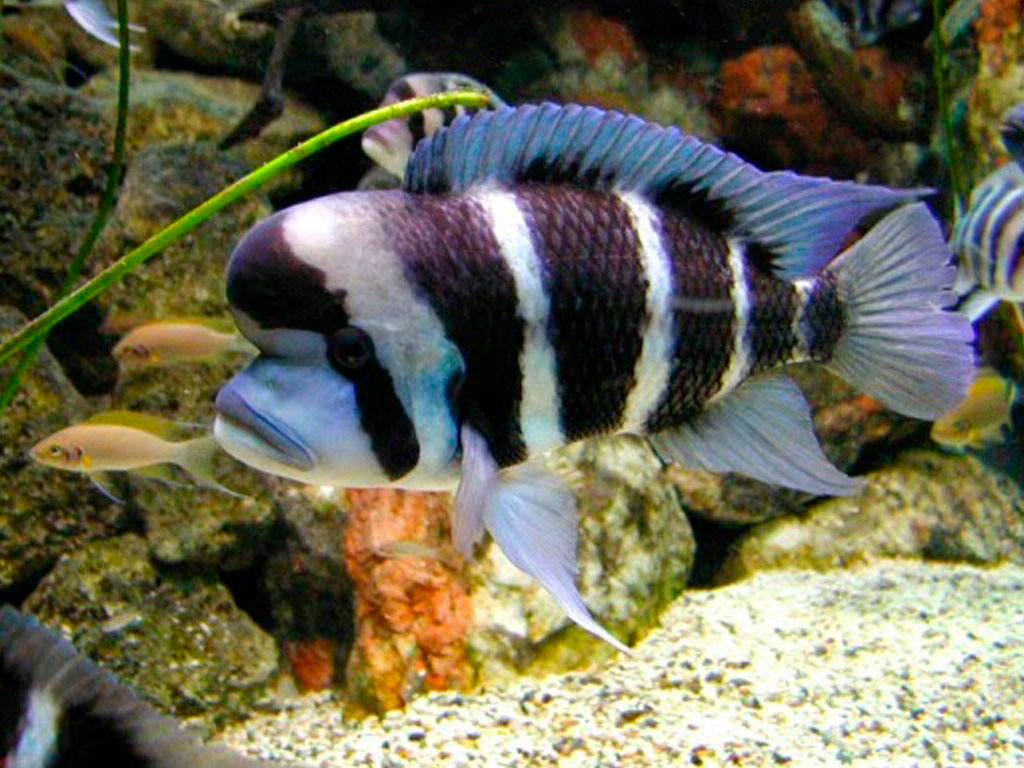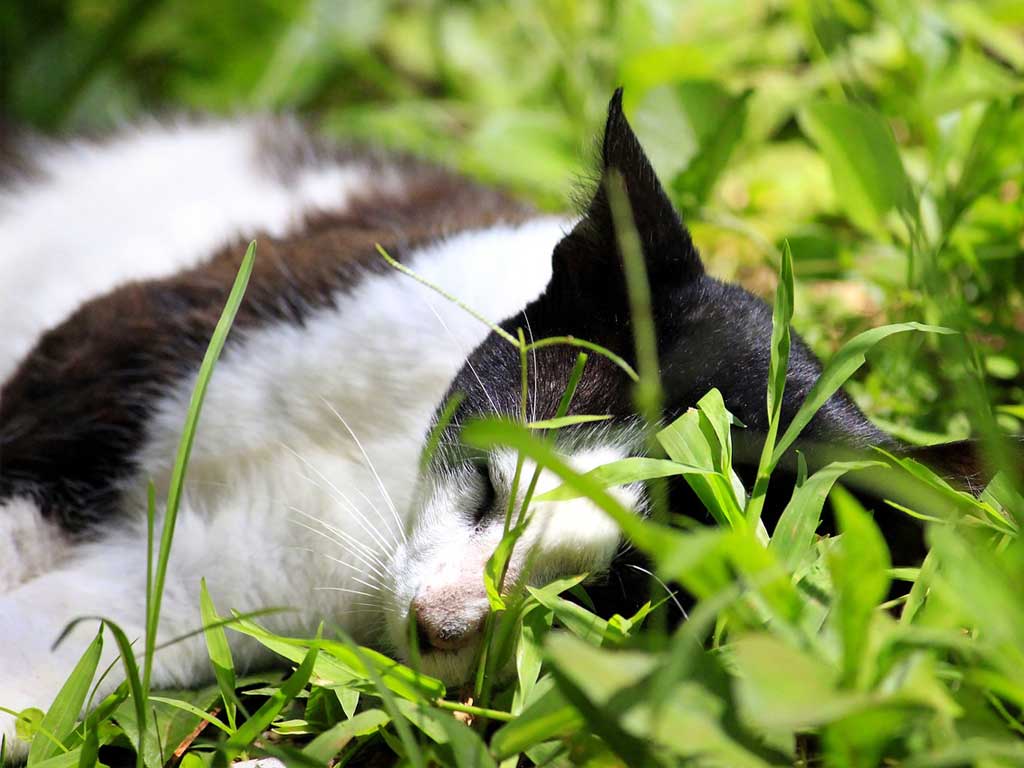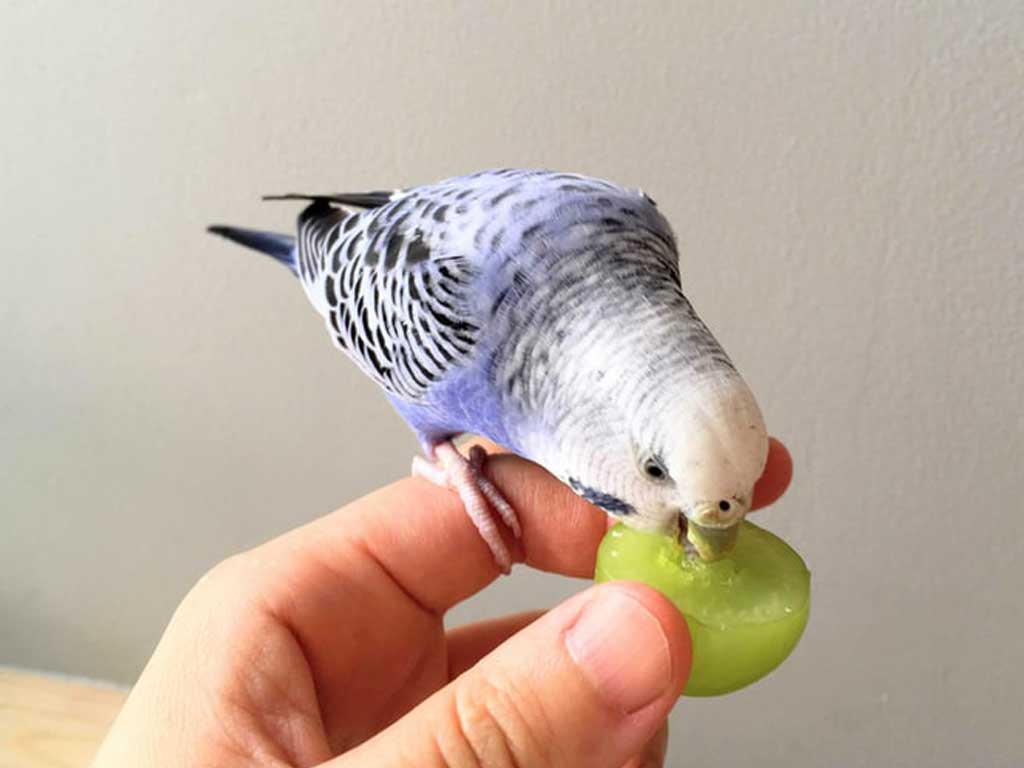Imagine watching your aquarium and seeing a constellation of tiny, neon-blue dots of light dancing in the water. It’s not an illusion; it’s the spectacle offered by the Lampeye Killifish or Norman’s Lampeye (Poropanchax normani). This small but fascinating fish, native to West Africa, has won the hearts of aquarists not only for its peaceful nature and adaptability but for the incredible feature that gives it its name: an intense glow in its eyes that seems to emit its own light.
Suitable even for beginners and a stellar addition to planted aquariums, the Lampeye Killifish is much more than a simple curiosity. It is a robust, non-annual killifish with captivating social behavior. In this complete guide, we will break down everything you need to know for your shoal of Lampeyes to not only survive but thrive, fill the upper level of your tank with life, and even surprise you with how easy they are to breed. Get ready to get to know this little aquatic gem in depth.
Who is the Lampeye Killifish? The Secret Behind its Eyes
Norman’s Lampeye is a member of the large killifish family. Its scientific name has caused some confusion; previously classified as Aplocheilichthys normani, modern taxonomy places it in the genus Poropanchax. However, in the aquarium world, both names, along with “Lampeye Killifish,” are widely recognized.
But what makes their eyes shine so intensely? It’s not bioluminescence, meaning they don’t produce their own light. The phenomenon is due to iridescence: the upper part of their iris has a layer of cells that reflect light spectacularly, creating a very visible electric blue or greenish flash, even from a distance. When a shoal moves in unison, the effect is hypnotic, as if tiny flashlights were exploring the aquarium.
Unlike many other killifish, Poropanchax normani is non-annual. This means it doesn’t live tied to rain and dry cycles but has a lifespan of approximately 3 years in optimal conditions, making it a more lasting aquatic companion.
Natural Habitat: Adaptability Forged in Africa
To understand their needs, we must travel to their home in West Africa, in countries like Senegal, Nigeria, and Ivory Coast. There, they inhabit an impressive variety of water bodies: from slow-moving streams and rivers to swamps, lagoons, and even temporary puddles. This ability to thrive in such diverse environments is the reason for their great adaptability in the aquarium. They prefer calm waters, often with abundant vegetation and organic matter, where they hunt small invertebrates on the surface.
Creating the Ideal Aquarium for Norman’s Lampeye
Replicating their natural environment, prioritizing stability and space, is the key to success. They are active fish that need to swim but also appreciate the security of plants.
Tank Size and Setup
- Minimum Size: A 15-gallon (approx. 60 liters) aquarium is ideal to start, comfortably housing a shoal of 6 to 8 individuals. In larger tanks, they look spectacular in bigger groups (15-20 fish).
- Shoaling Behavior: They are schooling fish. Never keep a single specimen alone. A group of 6 or more is essential for them to feel secure and display their natural behavior.
- Filtration: They require efficient filtration that keeps the water clean but with a gentle current. A sponge filter or a hang-on-back filter with an adjustable flow are perfect options.
Water Parameters: Stability is Key
Thanks to their origin, they are remarkably tolerant. However, they perform best in the following ranges:
| Parameter | Ideal Range | Notes |
| Temperature | 23°C – 28°C (73°F – 82°F) | The standard tropical range. They tolerate slight variations. |
| pH | 6.5 – 8.0 | They prefer neutrality or slight alkalinity but do not suffer in slightly acidic water. |
| Hardness (GH) | 5 – 19 dGH | They adapt well to both soft and moderately hard water. |
| Ammonia/Nitrite | 0 ppm | As with most fish, they are sensitive to these compounds. |
Decoration: A Stage to Highlight Their Glow
To make the glow of their eyes stand out as much as possible, play with contrasts. A dark substrate (sand or fine gravel) and the brown background of driftwood or roots will make their color pop. They appreciate a densely planted aquarium on the sides and back, but with ample open swimming space at the front and top. Floating plants like Frogbit (Limnobium laevigatum) or Salvinia will dim the light and provide them with a greater sense of security.
Behavior and Compatibility: A Peaceful Neighbor
Despite being a killifish, Poropanchax normani is exceptionally peaceful. It occupies the mid-to-upper level of the aquarium, making it a perfect candidate for filling that often empty space in community tanks.
Males (with longer, more colorful fins) may engage in small chases with each other, but these rarely result in harm. For more harmonious behavior, it is recommended to keep a ratio of more females to males (e.g., 2 males and 4 females) or a large group where any potential aggression is diluted.
They are compatible with other fish of similar size and calm temperament. Excellent tank mates include:
- Small Rasboras (Galaxy, Mosquito)
- Tetras (Neon, Cardinal, Ember)
- Corydoras and Otocinclus for the bottom
- Endler’s Livebearers
- Shrimp (Neocaridina) and snails
Feeding: The Diet of a Micropredator
In nature, their supine (upward-facing) mouth reveals their strategy: they patrol the surface searching for insects, larvae, and small crustaceans that fall into the water. They are primarily carnivorous.
In captivity, they are not picky at all. They will gladly accept:
- Dry Food: High-quality flakes or micro-pellets that are slow to sink. Make sure the size is very small for their mouths.
- Frozen or Freeze-Dried Food: Daphnia, brine shrimp, bloodworms.
- Live Food: This is the best supplement to boost their health, color, and breeding behavior. Freshly hatched brine shrimp and daphnia are their favorites.
Breeding Guide: The Surprising Ease of the Lampeye
One of the most rewarding features of Norman’s Lampeye is how easily they breed, often without direct intervention. They are egg scatterers.
- The Process: Females deposit adhesive eggs daily among the leaves of fine-leaved plants, such as Java moss, Cabomba, or artificial spawning mops.
- Parental Behavior: Unlike many other fish, the parents are not voracious predators of their own eggs or fry, especially if they are well-fed. This is a huge advantage.
- Eggs and Fry: The eggs are surprisingly large for the fish’s size. They hatch in about 7-14 days, depending on the temperature. The fry are also born at a considerable size, which allows them to immediately eat baby brine shrimp and even powdered dry food, greatly increasing their survival rate.
To increase the number of survivors, you can move the plants with eggs to a separate breeding tank with a sponge filter. In a species-only tank, it is very likely that the shoal will grow on its own.
The Lampeye Killifish or Norman’s Lampeye is proof that you don’t need to be big to make a big impact. Its dazzling iridescence, peaceful nature, active behavior in the upper part of the tank, and surprising ease of breeding make it an exceptional choice for any hobbyist. It is a fish that not only adds beauty but also a touch of magic and mystery to any aquascape. If you are looking for a robust, captivating, and different species, do not hesitate to give this living constellation a chance.
(FAQs)
Why do the Lampeye Killifish’s eyes glow?
They do not produce their own light. The glow is caused by iridescence, a layer of cells in their iris that reflects ambient light, creating an intense blue or greenish flash.
What size tank does Norman’s Lampeye need?
A minimum of 15 gallons (approx. 60 liters) is recommended to keep a healthy shoal of at least 6-8 individuals, giving them enough space to swim.
Is this fish aggressive towards other tank mates?
No, it is extremely peaceful. It is an excellent fish for community aquariums with other small and calm species.
What do Lampeye Killifish fry eat when they hatch?
The fry are large enough at birth to eat freshly hatched baby brine shrimp and finely powdered high-quality dry food from day one.
How long does the Lampeye Killifish live?
As a non-annual killifish, it has a lifespan of approximately 3 years in an aquarium with good conditions and a proper diet.

